The timewarp town that escaped the UK seaside's downward spiral
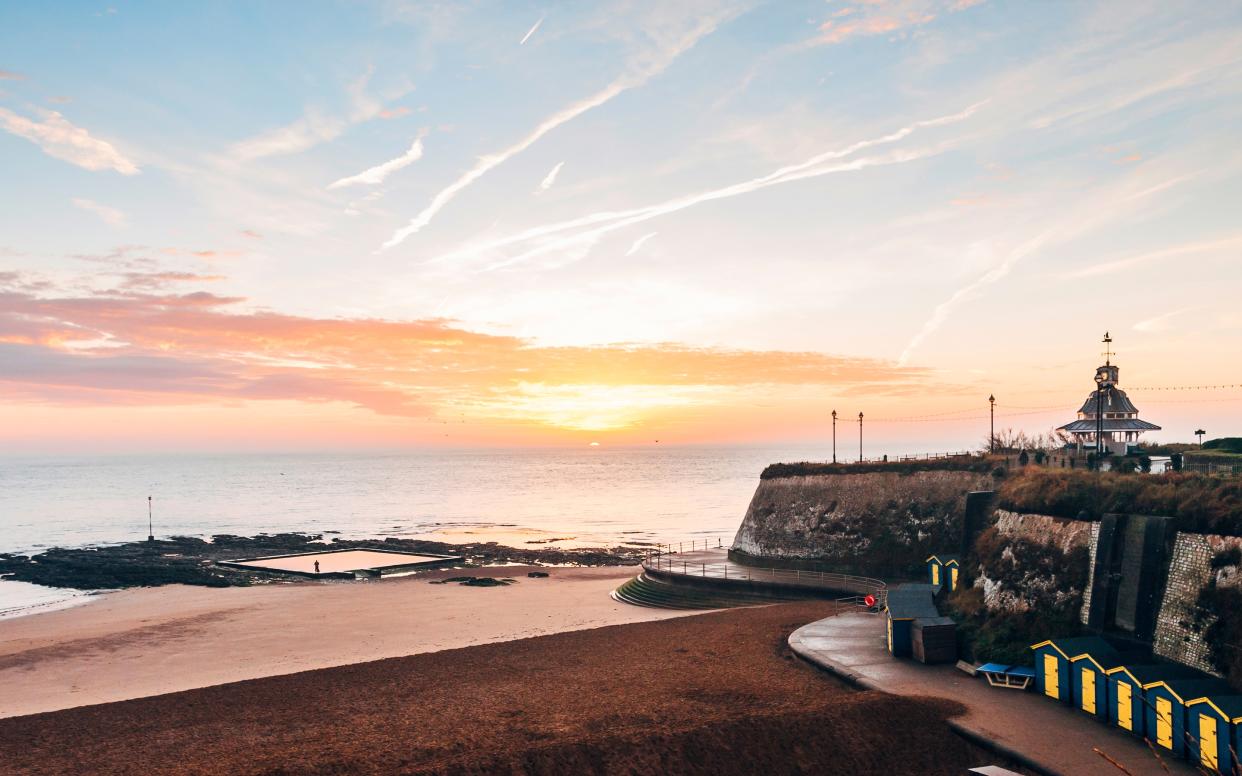
I'll confess. I was expecting to be underwhelmed. My mission? To investigate whether Broadstairs still offers much appeal or whether, like so many of Britain's seaside resorts, its heyday is now a mere dot on the horizon of the past: long abandoned by the public in favour of cheap package holidays abroad, and resigned to its tired, tattered status as a has-been.
It's an overcast Tuesday morning in October, and I'm on a ghost train from London Victoria: arguably tough conditions under which to test a coastal town that, by default, best lends itself to a sunny Saturday in summer.
This was, on the other hand, Charles Dickens' favourite time of year to visit. Of his long love affair with Broadstairs, the Victorian-era author wrote: "In the autumn-time of the year, when the great metropolis is so much hotter, so much noisier, [...] so much more crowded, so much more disturbing and distracting in all respects, a quiet sea-beach becomes indeed a blessed spot."
Tucked between Margate and Ramsgate on a stretch of coast dubbed (somewhat ambitiously) the Kent Riviera, Broadstairs is the quintessential middle child. Margate, on its left, has been the target of an aggressive overhaul in recent years, what with the Tracey Emin-backed opening of the Turner Contemporary gallery in 2011, followed by a flurry of new hotels and restaurants. Ramsgate, to the right, last year transformed its derelict casino hall into the world's largest Wetherspoons.
But Broadstairs - proud of its 1930s ice cream parlour and literary ties to Dickens - has throughout these transitory times inconspicuously whistled and looked the other way.
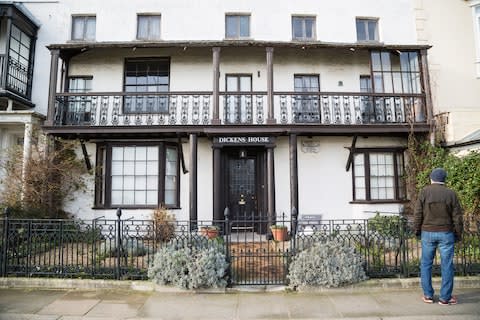
"Has it changed much, since you've lived here?" I ask the gloriously eccentric owner of a secondhand bookshop I stumble across.
"Thank God no," he responds, in a hoarse, faintly aristocratic whisper. "We could do without Margate, mind you. That place is a dump."
Overall, Broadstairs is something of a jumble - "half awake and half asleep" as Dickens put it. As I make my meandering loop from the train station, ten minutes downhill to the pier, along the beach and then into the various shops, pubs and cafes that sit at its heart, I transition through several time warps.
The autumn sun has done an admirable job of elbowing its way out of the clouds, and for this day at least, it still feels like summer. A maze-like assortment of neatly clipped hedges, battered palm trees, and bright, fragrant flower beds lead to a promenade, where solitary silver-haired gentlemen sit on benches perusing their broadsheets.
A bandstand dressed with colourful bunting stands empty, as does an elegant observation deck with flaking paint, topped with a clock and a spire. Peering down over the seaweed streaked mustard-coloured beach that is Viking Bay, which hosts an empty 1980s tide pool, I count two lone walkers, one couple huddled together on the sand, and a sheepdog trying its earnest best to herd a terrier.
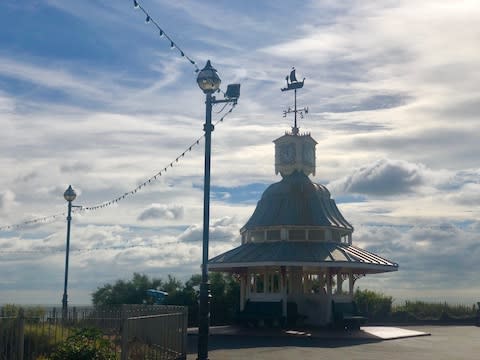
I poke my head into Morelli’s, the neon-fronted ice cream parlour that first flung open its doors in 1932 to much rapture, boasting salmon-hued leatherette booths, a jukebox and 20 flavours of gelato. Today, locals collect outside on its chrome tables and lament property prices (last year, they surged by more than 10 per cent, according to Zoopla).
Old jazz music floats from the open windows of one cafe I pass, and then a change in tempo when I reach Tartar Frigate, an 18th century pub named after the HMS Tartar ship that was built closeby. There's a grandfather clock in the corner, a wooden ship wheel masquerading as a chandelier on the ceiling, and they're playing Madonna's Holiday.
My senses pleasantly baffled, I weave my way up Harbour Street, under York Gate Arch - built in 1540 as part of a medieval fortification structure - past several Victorian lamp posts, a very 90s BT phone box and an entirely empty amusement arcade full of whirring, blinking, neglected coin machines seemingly stuck somewhere in the 70s.
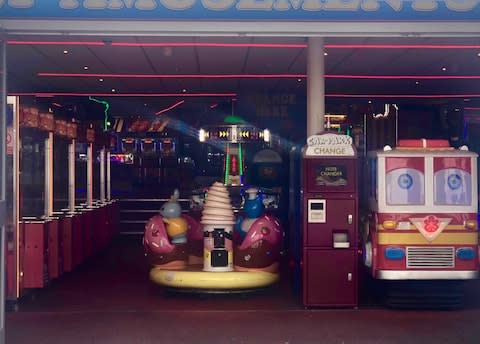
I pass the cheery, pastel-hued Bessie's Tea Parlour, where I partake in a fiery ginger and lemongrass brew, served with a silver strainer from a floral teapot, accompanied by a floral teacup, on a floral tablecloth, by a charming waitress decked out in floral 50s attire. Surely this place has quite the heritage, I mention to the waitress as I pay. It opened in 2014.
I cross the cobbled street and spot The Chapel, once a 1350s-built place of worship, now one of the most charming and peculiar drinking holes I've ever ventured into - a cross between a pirate's inn and Harry Potter's wand shop. Located down a narrow stairwell, the only natural light being the dim shards that fall in needles from the church windows upstairs, it's a wondrous cataclysm of antique books stacked from floor to ceiling, a bar strung with multi-coloured fairy lights, flickering candles that drool deep-red wax down heavy silver candlesticks, and medieval-style shields that hang overhead.
"Are you open?" I enquire of the young man basking vacantly in front of an ancient electric heater. He nods and stirs, and I proceed to quiz him about Broadstairs over a glass of wine. It gets busy when the town hosts festivals - the latest being its annual food festival, "so busy we needed two people behind the bar" he tells me - but otherwise it's a sleepy place.
For beach-going, locals favour Louisa Bay and Stone Bay, tucked around the corner of Broadstairs' chalk cliffs, but they generally refrain from recommending these to tourists, for obvious reasons.
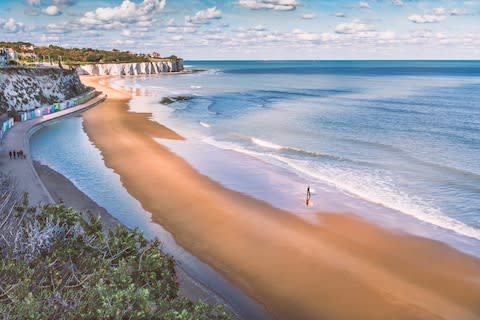
The next stop on my mini pub-crawl is The Thirty-Nine Steps, back up on ground level, which sits on a corner with bright, panoramic people-watching windows. The barmaid is singing jauntily along to a John Mayer album, a lone man nurses a glass of red wine and gazes out of the window, his dog at his feet, while another is reading in the corner. Eventually, they strike up idle chatter.
Carnival Cruises is the topic of the day, and these residents aren't happy about it - largely for its regular dumping of foreigners to their shores, which in turn has been pushing prices up. Coincidentally, a woman approaches the bar and says: "It's really expensive these days - do you have anything cheap?"
"Tap water," the barmaid responds, deadpan. "It's free."
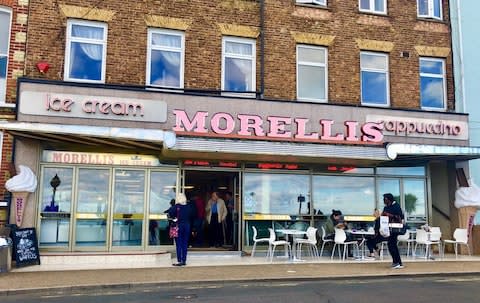
While on the seafront Broadstairs remains pleasantly old-fashioned - occasional cruise stampede or not - with its colourful weather-worn cabins and closed-for-winter souvenir shops, you can certainly see the old jostling for space with the new in the town centre. H Harringtons, "General Ironmonger since 1890", sits a stone’s throw from the New China Inn takeaway. Antiquarian Antiques shares a strip with a cluster of modern, minimalistic Nordic vendors - "Kaffine", "Kit" and "C&Sea", to name a few.
"Most of the independent shops are gone now. It's all the restaurants and coffee shops," the co-owner of Bumbles Antiques tells me as I browse her collection of Beano comics and Beatrix Potter memorabilia. More than 20 years on, though, she's still in business.
"I don’t know how those cafes make any money," grumbles the bookshop owner, and he's not wrong. Costa, I notice, is empty.
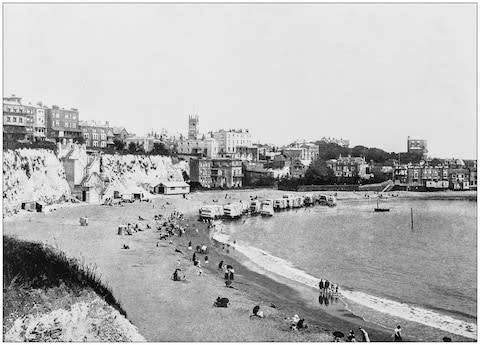
The last establishment I drop into before heading back to the train station is The Four Candles Alehouse, squirrelled away on a residential block further up the hill - and this is the most populous place by far. I'm greeted with bemusement and curiosity by the gaggle of regulars that fill its tables. They can spot a DFL (Down From London, as we're dubbed) from a mile off.
"How did you find us?" one asks. TripAdvisor, I tell him, apologetically. The Four Candles, Britain's smallest brewpub, is about as "Broadstairs" as you can get, and it's great. "No lagers, no spirits, no piped music, no Sky TV, no Wi-Fi and we boast terrible mobile phone reception," the owner proudly states.
It's places like this that I really hope survive. Broadstairs has thus far shown an impressive stubbornness when it comes to self-preservation. In a 1930s guide book entitled The Kent Coast at its Best, author A.H. Simison describes the town as embracing modernity "always with a consistent policy of retaining those characteristics for which it has for so long been renowned".
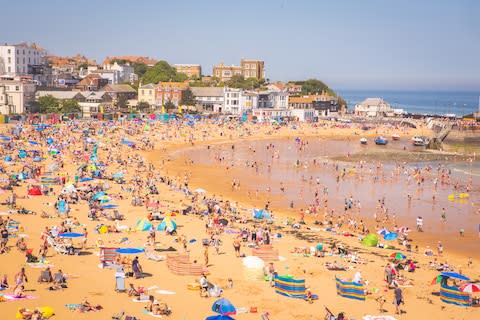
Today, Visit Kent's current CEO, Deirdre Wells, summarises it nicely, telling me: "Broadstairs blends the best of old world seaside charm, with a bohemian, ever-so-slightly hipster edge. It's one of our prettiest coastal towns, with great beaches and bags of historic charm – winding streets, Dickens links, cosy pubs - and is worth revisiting throughout the year."
Given it's a Tuesday morning in October and I've had a delightful day, Dickens appears to have been onto something, and I'm inclined to agree.
More on Britain's faded seaside towns
It's always sunny in Bognor Regis: a postcard from the Sussex Riveria
A nostalgic weekend in Bournemouth, Britain's beach-hut capital
Which town would you like to see featured next? Comment in the box below...

